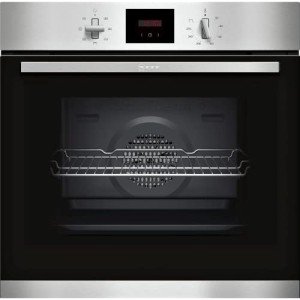Understanding Single Fan Ovens: A Comprehensive Guide
Intro
As contemporary kitchen areas grow progressively sophisticated, appliances created for performance and performance are at the forefront of consumer interest. One such device that remains popular among home cooks and baking enthusiasts is the single fan oven, an electric model known for its versatility and ease of use. This short article supplies extensive info about single fan ovens, including their functionality, advantages, types, and factors to consider for purchase.
What is a Single Fan Oven?
A single fan oven, likewise called a convection oven, features a single cooking chamber with a fan and exhaust system that circulates hot air consistently throughout the cooking area. This results in an even cooking temperature and boosted cooking efficiency compared to standard fixed ovens.
Key Components of a Single Fan Oven
- Heating Elements: Usually located at the leading and bottom, these produce heat for cooking.
- Fan: The central feature that circulates the hot air within the oven, promoting much faster and more even cooking.
- Thermostat: Regulates the temperature to ensure optimum cooking conditions.
- Control Panel: Provides interface alternatives for setting temperature levels, cooking times, and modes.
How Does a Single Fan Oven Work?
Single fan ovens operate by combining the heat from the heating aspects with the air movement created by the fan. The hot air is dispersed equally around the food, substantially minimizing cooking time while likewise permitting lower cooking temperature levels.
Advantages of Using a Single Fan Oven
- Faster Cooking Times: The circulating air enables food to cook faster compared to traditional ovens.
- Even Cooking: Food is exposed to constant heat from all sides, reducing the opportunities of uneven cooking or hot areas.
- Adaptability: These ovens can be utilized for baking, roasting, and even barbecuing, making them appropriate for a vast array of recipes.
- Energy Efficiency: By cooking at lower temperature levels and in less time, these ovens may use less energy than their traditional equivalents.
- Moisture Retention: The style assists maintain wetness in dishes, resulting in juicy roasts and baked items with a light texture.
Kinds Of Single Fan Ovens
When thinking about a single fan oven, customers might encounter various types based on functions and design. Here are a couple of common types:
1. Built-in Single Fan Ovens
- Description: Integrated into kitchen cabinetry for a seamless appearance.
- Pros: Saves counter space, aesthetically pleasing.
- Cons: Higher installation expenses, might need expert aid.
2. Freestanding Single Fan Ovens
- Description: Standalone systems that can be placed throughout the kitchen.
- Pros: Easy to install, flexible positioning.
- Cons: Can take up more space, might not blend well with cabinets.
3. Range Cookers with Fan Ovens
- Description: Multiple cooking alternatives, including a fan oven, combined in one system.
- Pros: Offers various cooking techniques, ideal for ambitious cooks.
- Cons: Generally more expensive, larger footprint.
Contrast Table of Single Fan Oven Types
| Type | Pros | Cons |
|---|---|---|
| Built-in | Space-saving, aesthetically pleasing | Greater expenses, expert setup required |
| Freestanding | Versatile positioning | Takes up more area, may not match cabinetry |
| Range Cooker | Multiple cooking methods | Higher price, larger size |
Choosing the Right Single Fan Oven
When choosing a single fan oven, several elements ought to be considered to ensure that it satisfies individual cooking needs and fits within your kitchen layout.
Factors to Consider
- Size and Capacity: The size should match your kitchen design while offering sufficient capacity for your cooking habits.
- Functions and Functions: Look for adjustable racks, self-cleaning alternatives, and numerous cooking modes to boost versatility.
- Energy Efficiency: Check for energy scores; some models are developed to be particularly energy-efficient.
- Budget plan: Costs can vary substantially, making it essential to develop a realistic budget beforehand.
Upkeep Tips for Single Fan Ovens
- Routine Cleaning: Wipe down interior surfaces after use to prevent residue build-up.
- Examine the Fan: Ensure the fan is free from blockages and functioning correctly.
- Check Seals: Regularly inspect the door seals for wear and tear to keep cooking effectiveness.
- Expert Servicing: Schedule regular expert checks to guarantee optimum operation.
Frequently Asked Questions about Single Fan Ovens
1. Can I utilize my single fan oven for baking?
Definitely! Single fan ovens are outstanding for baking, offering constant temperature levels important for cakes, cookies, and breads.
2. Is it essential to pre-heat a single fan oven?
While preheating is typically suggested for ideal outcomes, due to the effectiveness of a fan oven, some recipes may not need it.
3. Can I cook numerous dishes at the same time?
Yes! The even heat distribution in single fan ovens enables you to bake or roast multiple dishes concurrently, utilizing all rack levels efficiently.
4. Does a single fan oven cook quicker than a traditional oven?
Yes, the fan-assisted heating reduces cooking times, making it possible for much faster cooking.
Single fan ovens offer an exceptional balance of speed, flexibility, and efficiency, making them an important addition to any kitchen. Whether for baking, roasting, or daily cooking, Best Built-In Single Ovens guarantee that home cooks can produce tasty meals with ease. By comprehending the benefits, types, and factors to consider for acquiring a single fan oven, customers can make an educated decision that lines up with their culinary desires and kitchen dynamics.
Accepting the performances of a single fan oven certainly paves the way for enhanced cooking experiences in the modern-day kitchen.

